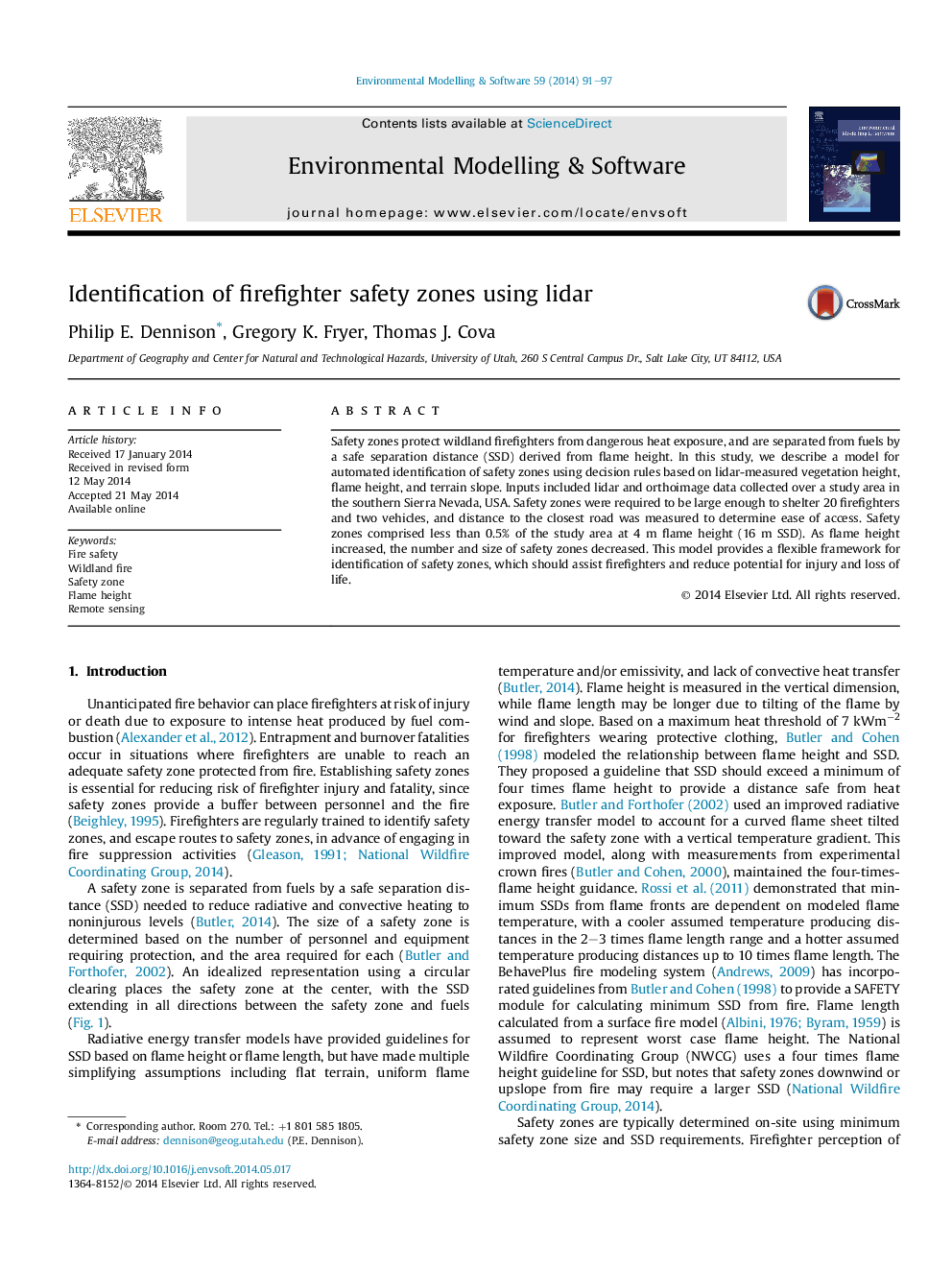| Article ID | Journal | Published Year | Pages | File Type |
|---|---|---|---|---|
| 6963795 | Environmental Modelling & Software | 2014 | 7 Pages |
Abstract
Safety zones protect wildland firefighters from dangerous heat exposure, and are separated from fuels by a safe separation distance (SSD) derived from flame height. In this study, we describe a model for automated identification of safety zones using decision rules based on lidar-measured vegetation height, flame height, and terrain slope. Inputs included lidar and orthoimage data collected over a study area in the southern Sierra Nevada, USA. Safety zones were required to be large enough to shelter 20 firefighters and two vehicles, and distance to the closest road was measured to determine ease of access. Safety zones comprised less than 0.5% of the study area at 4Â m flame height (16Â m SSD). As flame height increased, the number and size of safety zones decreased. This model provides a flexible framework for identification of safety zones, which should assist firefighters and reduce potential for injury and loss of life.
Related Topics
Physical Sciences and Engineering
Computer Science
Software
Authors
Philip E. Dennison, Gregory K. Fryer, Thomas J. Cova,
